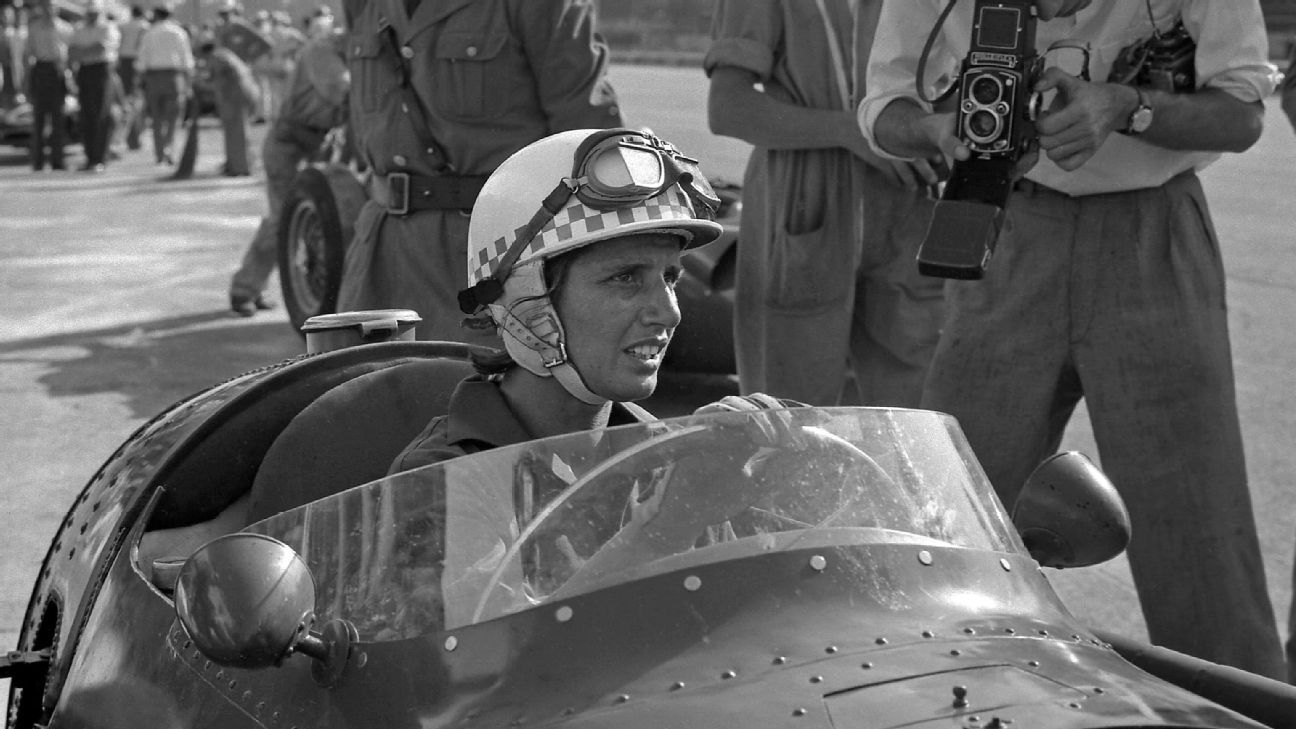First female Formula 1 driver titled: Who is Maria Teresa de Filippis?
We wrote about the life and career of Maria Teresa de Filippis, who became a pioneer in history with her participation in motor racing, a sport dominated by men, despite all prejudices.

Maria was born on November 11, 1926 in Naples, Italy. She was born as the youngest of five children to her Italian father, Count Serino Francesco De Filippis, and Spanish noble mother, Narcisa Anselmi Balaguer Roca de Togores y Ruco y Perpignan. Starting to show an interest in sports from her teenage years, Maria became an avid horse rider and tennis player.
In the late 1940s, Maria became interested and curious about motorsport. But her two brothers in particular provoked her about this interest, telling Maria that she could not go very fast and would be slow. Despite these prejudices and criticism from her close friends and relatives, Maria stepped into her racing career at the age of 22. Maria won her first race using a Fiat 500 on a 10 km road between Salerno and Cava de' Tirreni. This success gave him the confidence to compete in the Italian sports car championship and resulted in that competitor finishing second in the 1954 season. Seeing Maria's potential, Maserati, a luxury vehicle consumer, offered and hired Maria as a factory driver.
In the following years, Maria participated in various motor races, including hill climbing and endurance races. She managed to place second in the competition with the "Maserati 200S", which she drove in a sports car race supporting the 1956 Naples Grand Prix.
In 1958, Maria was offered the chance to drive a Formula 1 car. Although Maserati was a successful Formula 1 chassis manufacturer in the 1950s and won numerous races by supplying several teams, it officially withdrew from the sport in 1958. However, most of her cars remained open for use by pirates. On May 18, 1958, Maria was given the chance to enter the second round of the 1958 Formula 1 season, the Monaco Grand Prix, in one of the 250Fs.
Maria lost the race alongside her first-time friend and future head of Formula 1 Management and Formula 1 Management, Bernie Ecclestone. The duo met on this occasion, formed a friendship and got along well in the following years. Maria's "1'50.8" race time was 5.8 seconds behind the qualifying time of the "fastest 16" in her first race, which included future world champions Mike Hawthorn, Jack Brabham and Graham Hill. Race car driver Juan Manuel Fangio gave Maria a lot of advice and support throughout the season.
The 1958 Belgian Grand Prix allowed all drivers to compete without interruption for qualifying time, with Maria taking 19th place. She managed to finish the race in 10th and last place, as she laps twice in the 24-lap race and the other nine cars failed to finish. This was Maria's only race finish.
Preparing to make her next race at the French Grand Prix in Reims-Gueux on 6 July 1958, Maria's competition was blocked. In an interview in 2006, she said that the race director got in the way and fired her, saying "the only helmet a woman should wear is the one at the hairdresser's".
Taking part in the 1958 Portuguese Grand Prix race in August, Maria finished the race in last place. Maria only drove six laps in the race before her engine failed. On September 7, 1958, the Autodromo Nazionale started its Grand Prix at the racetrack in Monza from last place. Maria managed to complete 57 of the 70 laps before retiring due to engine problems. Maria is ranked 14th out of 21 retirees and eighth as the last retiree.
Joining the Behra-Porsche RSK team in 1959, Maria entered the Monaco Grand Prix but was unsuccessful. Her "1'47.8" time was three seconds behind her slowest qualifying speed and another second behind her teammate Wolfgang von Trips. This was Maria's last attempt at a Grand Prix qualification.
Maria was devastated by the incident after Jean Behra, the team leader of the Porsche brand, crashed and died while driving at a sports car support race on August 1, 1959. After the crashes and deaths of her important and dear friends during the race, Maria decided to retire from circuit and professional racing.
In the 1960s, Maria married the Austrian chemist Theodor Huschek. Retired, Maria did not participate in any motor racing until 1979, when she joined the international Former F1 Grand Prix Drivers Club. In 1997, she was appointed as the club's Vice President. Also in 2004, she became a founding member and president of the Maserati Club. Maria passed away in January 2016 at the age of 89.
Maria became a pioneer in motor racing, a traditionally male-dominated sport, and many women followed her.
